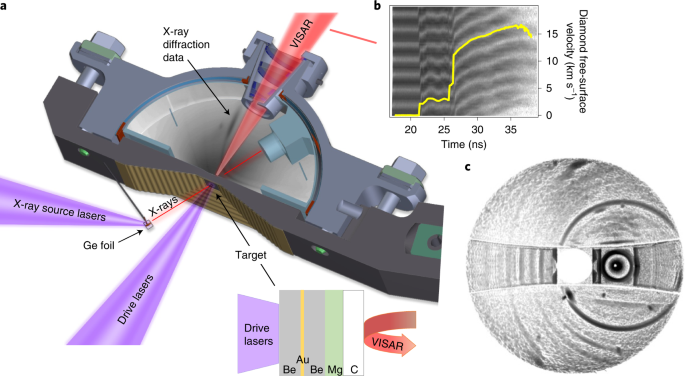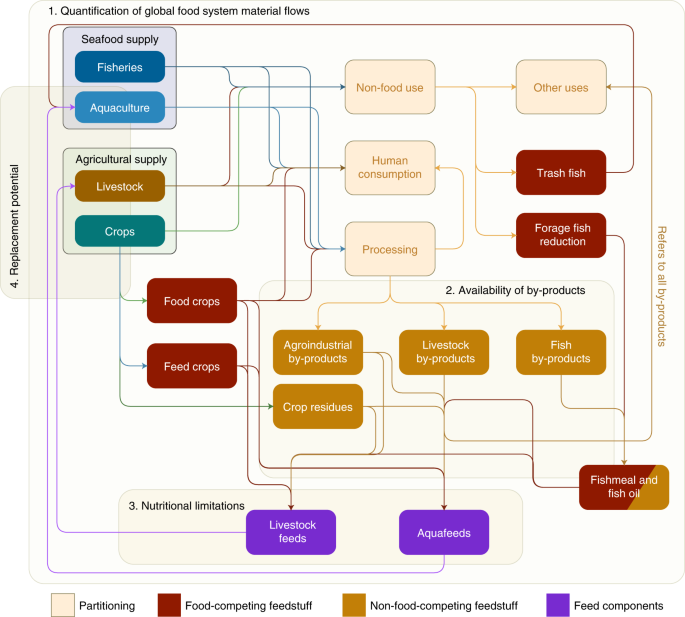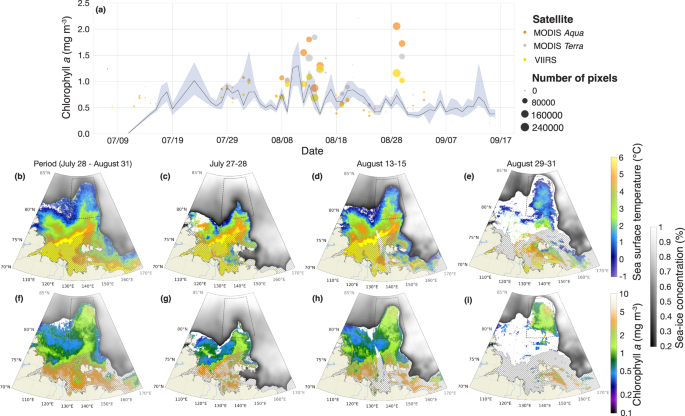2022-09-19 アメリカ・ローレンスリバモア国立研究所(LLNL)
観測結果は、マグネシウムの理論的な予測を裏付け、大気圧の1千万倍という超高圧がいかに物質に根本的に新しい化学的・構造的挙動を強いるかを実証している。
最新の計算手法が、隣接する原子に結合した内殻電子が、超高圧下で相互作用を開始し、従来の化学結合と結晶構造形成の法則を崩壊させることを示唆している。
今回の発見は、高圧下で、通常はMg金属中を自由に動き回っている価電子が、原子間の空隙に局在化し、ほとんど質量のない負電荷イオンを形成していることを示唆している。
元素状Mgをランプ圧縮し、1.32 TPa(地球中心部の圧力の3倍以上)のピーク圧力まで固体状態を維持し、Mgが4つの新しい結晶構造に変化するのを観察した。これは、結晶中の球状原子は、圧縮度が増すにつれて、より効率的にパッキングされるはずだという従来の理解とは矛盾している。
今回のMgの開放構造の直接観測は、価電子-内殻および内殻-内殻電子の相互作用が、超高圧下で物質構造にどのような影響を与えるかを示す初めての実験的証拠となる。0.96~1.32 TPaで観測された構造相転移は、これまでどの物質でも観測された最高圧力の構造相転移であり、TPa圧力では初めてのものである。
<関連情報>
- https://www.llnl.gov/news/under-pressure-solid-matter-takes-new-behavior
- https://www.nature.com/articles/s41567-022-01732-7
テラパスカル圧力下における元素状マグネシウムの開放構造の実験的観察 Experimental observation of open structures in elemental magnesium at terapascal pressures
M. G. Gorman,S. Elatresh,A. Lazicki,M. M. E. Cormier,S. A. Bonev,D. McGonegle,R. Briggs,A. L. Coleman,S. D. Rothman,L. Peacock,J. V. Bernier,F. Coppari,D. G. Braun,J. R. Rygg,D. E. Fratanduono,R. Hoffmann,G. W. Collins,J. S. Wark,R. F. Smith,J. H. Eggert &. I. McMahon
Nature Physics Published:19 September 2022
DOI:https://doi.org/10.1038/s41567-022-01732-7

Abstract
Investigating how solid matter behaves at enormous pressures, such as those found in the deep interiors of giant planets, is a great experimental challenge. Over the past decade, computational predictions have revealed that compression to terapascal pressures may bring about counter-intuitive changes in the structure and bonding of solids as quantum mechanical forces grow in influence1,2,3,4,5,6. Although this behaviour has been observed at modest pressures in the highly compressible light alkali metals7,8, it has not been established whether it is commonplace among high-pressure solids more broadly. We used shaped laser pulses at the National Ignition Facility to compress elemental Mg up to 1.3 TPa, which is approximately four times the pressure at the Earth’s core. By directly probing the crystal structure using nanosecond-duration X-ray diffraction, we found that Mg changes its crystal structure several times with non-close-packed phases emerging at the highest pressures. Our results demonstrate that phase transformations of extremely condensed matter, previously only accessible through theoretical calculations, can now be experimentally explored.



